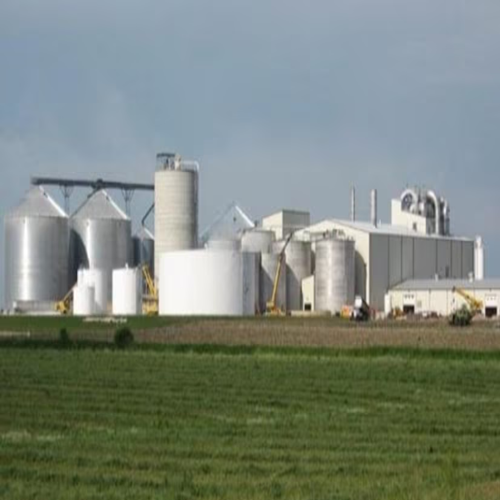Ethanol: An eco-friendly fuel or another green mirage?

The rise of ethanol as a green fuel is under scrutiny, with concerns over its environmental and food security impacts. Ethanol’s production demands significant energy, with an EROI of 4.26, and emits 0.295 kg CO2 equivalent per liter. Its water footprint is stark, requiring 1,344 liters per liter of ethanol, exacerbating India’s water scarcity. Intensive sugarcane farming degrades soil and biodiversity, while diverting farmland to ethanol threatens food security and raises food prices, echoing past environmental missteps.
The ethanol production process involves significant emissions and its transportation and processing stages add to this carbon load.
Summary A clash between the carbon advantage and water footprint of ethanol production may result in a dire trade-off between cleaner energy and basic human needs. Its promise as a clean fuel may be outweighed by its hidden threats to food security and the environment.
In the early 20th century, Thomas Midgley Jr, a chemist, introduced tetraethyl lead to gasoline, promising to revolutionize the automobile industry by reducing engine knock. It seemed like a miracle solution at the time, and Midgley was hailed as a hero.
However, the dark side of this innovation soon became apparent as leaded gasoline caused widespread environmental damage and severe public health issues, including brain damage in children. This tragic episode reminds us that what initially appears to be a groundbreaking solution can have unforeseen and devastating consequences.
In our quest for cleaner energy, we have turned to ethanol, championing it as a green alternative to fossil fuels. On the surface, it seems like a perfect solution—renewable, ostensibly cleaner and easily integrated into our existing fuel infrastructure. But as we delve deeper, we must ask ourselves if ethanol is truly the environmental saviour it’s touted to be, or are we being misled by yet another green mirage?
There are six main issues with mandating ethanol as fuel.
First, the life-cycle energy demand for ethanol production from sugarcane stands at 4.99 megajoules per litre. Although ethanol’s energy return on investment (EROI or the ratio of energy obtain to what’s spent on obtaining it) is 4.26, it pales in comparison with other biofuels.
Its modest EROI indicates that ethanol production is not as energy-efficient as it might seem. Studies have shown that sugarcane cultivation’s energy-intensive nature, coupled with ethanol’s processing needs, significantly undermines its net energy balance.
Second, according to a study published in Elsevier’s Bioresource Technology journal, ethanol’s carbon footprint (CF) at 0.295kg CO2 equivalent per litre is lower than that of fossil fuels, but it may be misleading to call it eco-friendly. The production process involves significant emissions and its transportation and processing stages add to this carbon load.
Third, the most alarming, is the water footprint (WF) of ethanol: 1,344 litres per litre of ethanol produced. India’s heavy use of groundwater for sugarcane irrigation worsens the blue water footprint, posing a major opportunity cost. This misallocation threatens water security and jeopardizes food security. We thus face a dire trade-off between energy and basic human needs.
The high WF contrasts with countries like Brazil, where sugarcane cultivation is primarily rain-fed, resulting in a lower WF. In India, where freshwater resources are already scarce, using such a colossal volume of water for ethanol production is unsustainable and borders on the reckless.
Fourth, India’s agricultural policy has long been dominated by rice and wheat because of the need to procure these two crops for the public distribution system. However, the Department of Agriculture and Farmers Welfare is now championing a crop diversification programme under the RKVY-Raftaar scheme in Haryana, Punjab and western Uttar Pradesh.
This initiative aims to shift crops from water-intensive paddy to sustainable alternatives like pulses, oilseeds, coarse cereals, nutri-cereals and cotton, addressing the country’s pressing need for water conservation. Yet, the recent push for enhanced ethanol production threatens to undermine this progress.
Ethanol production is inherently problematic, as it can lure farmers back into cultivating water-intensive crops, creating a paradox that could undo our efforts to diversify and conserve water.
Fifth, intensive sugarcane farming, characterized by monoculture practices, frequent tilling and the heavy use of chemical fertilizers and pesticides, significantly degrades soil health and agricultural productivity over time. Monoculture reduces biodiversity, which is essential for maintaining soil structure, while frequent tilling unsettles the soil, making it prone to erosion. The heavy irrigation required for sugarcane leads to waterlogging and soil compaction, further exacerbating erosion.
Sixth, diverting agricultural land for biofuel production poses significant risks to food security. Farm-land diversion can push up food prices by constraining supply. When agricultural land is repurposed for growing biofuel crops like sugarcane, corn or soybeans, it directly reduces the area available for cultivating food crops.
This competition for land use can lead to decreased food crop production. According to the International Food Policy Research Institute, the expansion of biofuel production has led to significant land use changes, often at the expense of food crops, resulting in reduced food supplies and increased prices.
With less land dedicated to food crops, the overall supply of food grains and other essential crops decreases. As a result, the supply-demand gap widens, leading to higher food prices. The World Bank reported in 2010 that food prices are seen to spike during rapid biofuel expansion, making it harder for low-income households to afford basic necessities.
This price volatility is compounded by the fact that biofuel crop prices are influenced by both food markets and energy markets, making them more susceptible to fluctuations in oil prices and policy changes in the energy sector.
Thus, we must exercise caution before pressing the acceleration pedal on ethanol. Ethanol’s promise as a green fuel might mask dire consequences. Let’s not repeat history’s mistakes.
Source Link : https://www.livemint.com/opinion/online-views/ethanol-an-eco-friendly-fuel-or-another-green-mirage-11719135697555.html
















